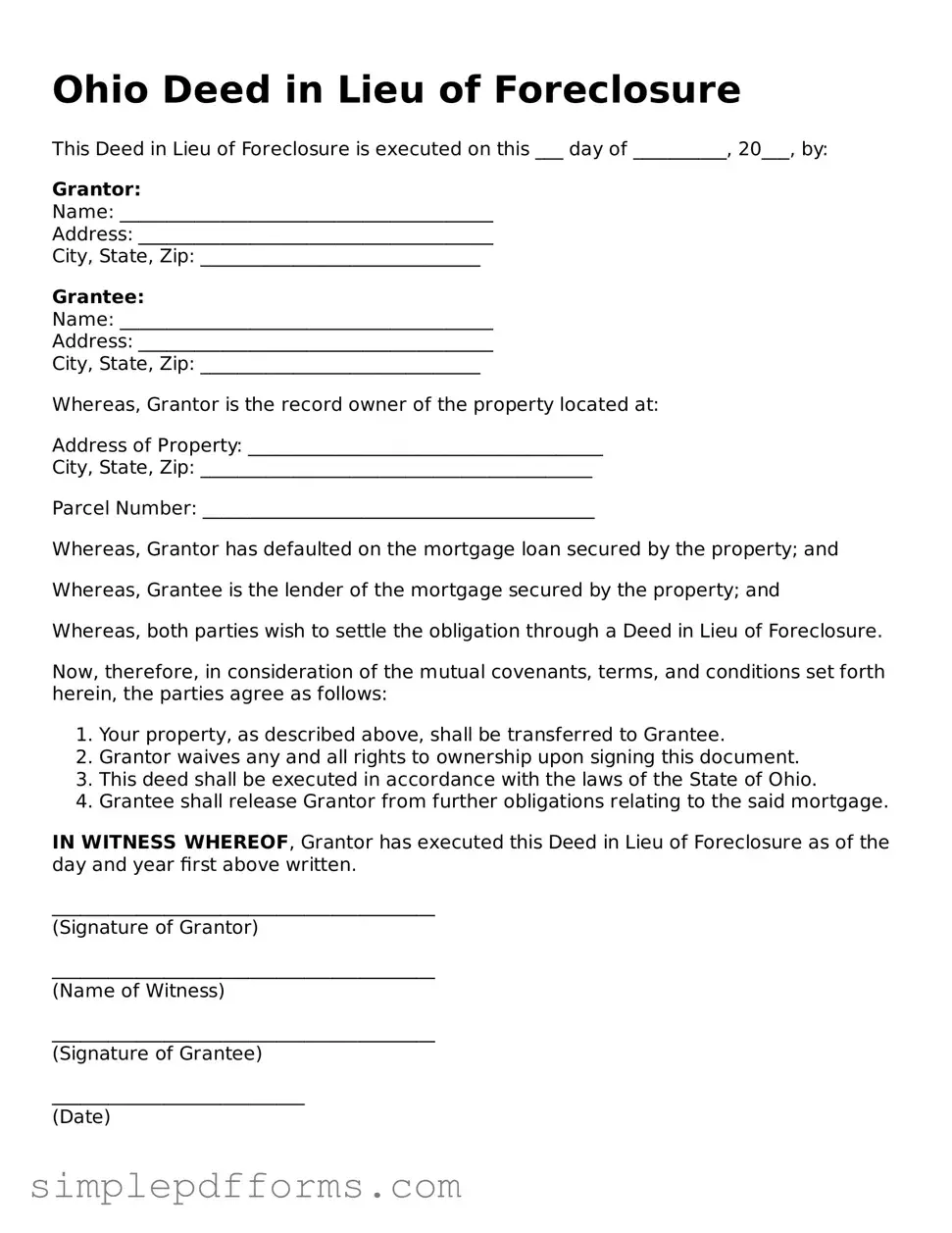Ohio General Warranty Deed Template
This General Warranty Deed is made this ___ day of ____________, 20___, in accordance with the Ohio Revised Code, Section 5302.01 et seq.
By this Deed, Grantor Name, residing at Grantor Address, hereinafter referred to as "Grantor," conveys and warrants to Grantee Name, residing at Grantee Address, hereinafter referred to as "Grantee," the following described real estate located in County Name, Ohio:
Legal Description:
_____________________________________________________________________________
_____________________________________________________________________________
This conveyance includes all rights, privileges, and appurtenances that belong to the property. The Grantor covenants that they hold good title to the property and will defend it against all claims.
IN WITNESS WHEREOF, the Grantor has hereunto set their hand this ___ day of ____________, 20___.
Grantor Signature: ________________________________
Printed Name: _________________________________
State of Ohio
County of _______________________________
Before me, a Notary Public, personally appeared _______________, the Grantor, known to me or proven to me on the basis of satisfactory evidence to be the person whose name is subscribed to this instrument, and acknowledged that they executed the same for the purposes therein contained.
Given under my hand and official seal this ___ day of ____________, 20___.
Notary Public Signature: _________________________
My Commission Expires: ________________________
